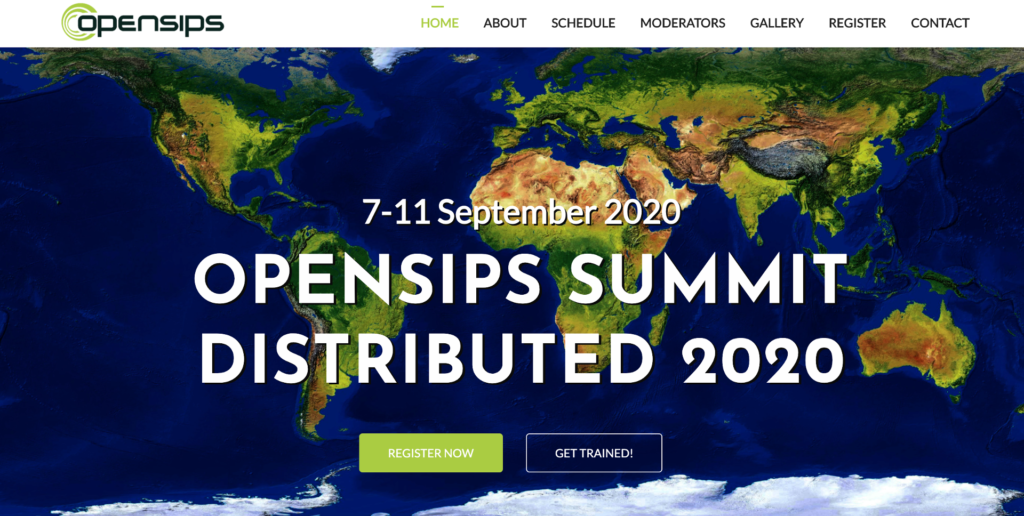
Thank you to the OpenSIPS project and Ecosystem for inviting me to present at OpenSIPS Summit Distributed 2020. Below is a video of my presentation, as well as the slides.
There are tens of successful Open Source Telecom Software projects, with vibrant communities supporting them. Asterisk, the most successful and longest running project is 20 years old.
OpenSIPS can trace its history nearly as long to the SIP Express Router (SER), initially developed by the Fraunhofer Institute for Open Communication Systems (FOKUS) in 2001, and open sourced in 2003.
OpenSIPS became a separate project in 2008, and today is rapidly developing with a vibrant community. We ran an open source telecom software survey in July/August 2020 to gather people’s experiences and opinions on using projects. This was an incremental update on the survey performed in 2019.
The 2020 survey filled in gaps on geographic issues, contributions to open source projects, deeper dive into hosting and redundancy, adding missing open source projects, and a few other items, such as the impact of COVID-19 and what questions you want asked in 2021.
I shared some of the highlights from the surveys providing the Status and Trends, these results are hot-off-the-press! No one pays for this survey, I do it to provide quantified independent answers to questions I am often asked about the projects.
OSS (Open Source Software) underpins the Web, 82% of web servers are open source (Apache, nginx). OSS became mainstream in the late 1990s / early 2000s. Most of the telecoms / communications innovation in the past two decades has come from OSS, it’s the future of our industry.
Most of CXTech (potentially a $1.2T industry) runs on open source telecom software projects, that are run by a few people, supported by their communities. However, for the Web many of the large web (Google, Amazon) and enterprise (IBM) companies play an active role in supporting open source. Telecom OSS has received little such support.
In fact, many telcos and their suppliers use OSS because it’s the best software available, but as a policy do not talk about it. They are starving telecom projects of ‘marketing oxygen’, as well as inadequately supporting the backbone of programmable telecoms / communications innovation.
Asia lags all other regions in adoption of open source telecom software. Yet given the diversity of needs across Asia, it is best suited to meet the needs and price points of the region. Rather than solutions built in North America for large enterprises where long lists of features are the judging criteria of the buying IT departments.
The local value-add resellers, integrators and managed services providers have a massive opportunity across Asia to use open source to build local solutions to local needs (and price points) with local support. I highlight this region as just one of the many massive opportunities for open source telecom software.
On the Road Ahead I shared the challenges the open source telecom software industry faces. For example, the industry is too insular, preferring to talk amongst itself than expand awareness across web developers. It lacks adequate support from the large corporations using its software.
Opportunities abound, but with severely limited resources how can the open source projects bring in new blood and achieve broader recognition? My recommendations are small but simple, focused on the next target customer segments, and get the documentation tuned to their needs, as documentation is the largest gap for many developers face in using open source telecom software.
Please support TADHack Global 2020 on 10-11th Oct by taking part, thank you.
